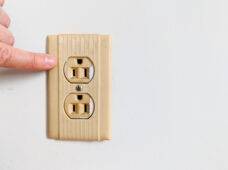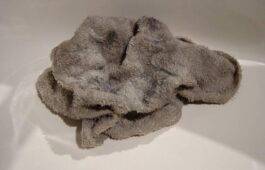HVAC Experts Say One Dehumidifier Might Not Be Enough
Most people buy a dehumidifier thinking it’ll fix everything right away. And sometimes it does, at least for one room. But if your whole house still feels sticky, musty, or just a little damp, a single unit might not be enough. Humidity has a way of drifting through hallways, rising up stairwells, and lingering in places you wouldn’t typically notice. Read on to figure out how many dehumidifiers you really need for your space.
Humidity Doesn’t Stay In One Place

You might run a dehumidifier in the living room and wonder why the bedrooms still feel muggy. Moisture travels through open doorways and vents, and once it spreads, one machine can’t keep up. It tries its best but ends up working overtime with mediocre results. Thinking of humidity as a “whole house” issue helps you avoid frustration later. It’s not a bad unit, it’s just outnumbered.
Larger Homes Need More Than A Single Unit

If you live in a multi-level home, one dehumidifier simply can’t cover every floor. Basements usually stay damp, while upper floors trap warm air that holds more moisture. Splitting the workload between floors makes a huge difference. Each level needs its own solution because every level fights humidity in its own way. A single machine just can’t cover that much real estate.
Basements Are Moisture Magnets

Basements are notorious for having damp air because moisture seeps through concrete, even when it looks dry. If you only have one dehumidifier, chances are it's down there working nonstop. The trouble is, pulling moisture from the basement doesn’t magically dry the upstairs. Treating the basement as a priority zone, but it should be just one part of the plan, not the whole thing. Other parts of the house get humid too.
Some Rooms Need Their Own Extra Help

Bathrooms, laundry rooms, and kitchens constantly produce moisture. Even with fans and vents, these spots can stay humid longer than the rest of the house. A small dehumidifier unit in those high-moisture areas can help prevent lingering dampness, mold, or that musty smell that sneaks into towels or cabinets.
Your Home’s Layout Matters More Than You’d Expect

Open floor plans allow air to flow freely, which sounds great until you realize humidity tags along for the ride. But closed-off hallways or oddly shaped rooms trap moisture in pockets. A dehumidifier works best when air can circulate around it, but not all rooms let air flow to the dehumidifier. Sometimes placing two smaller units in more central spots beats one large one struggling in the wrong place.
Climate Plays A Huge Role

If you live somewhere hot and humid, one dehumidifier often doesn’t stand a chance during peak humidity season. Your air conditioner helps, but AC alone can’t remove as much moisture as an actual dehumidifier. Homes in coastal, tropical, or muggy summer climates usually need multiple dehumidifiers just to keep things comfortable. It’s more about the weather in the area than the machine.
Whole-House Dehumidifiers Might Be Worth Considering

If you find yourself juggling several plug-in units, an HVAC-attached dehumidifier may be the better choice. It treats moisture at the system level instead of room by room. It’s an investment, but it keeps humidity steady throughout the entire home, not just where the machines are placed. For homes with chronic humidity problems, this option can really pay off in the long run.
The Goal Is Consistency

The goal of using multiple dehumidifiers is maintaining a steady, healthy humidity level in your house. When the air is balanced, your home smells fresher, fabrics feel cleaner, and your HVAC system works more efficiently. You also cut down on mold risks and that sticky feeling in the air that nobody likes. Think of it as giving your home a little boost.
Related Articles
-Why Your House Is So Humid, The Dangers, And How To Fix It
-Simple Ways to Increase Humidity in a Dry Home
-If Your House Smells Sweet, It Could Be A Sign Of A Serious Problem
If one dehumidifier hasn’t solved your humidity problems, it doesn’t mean you chose the wrong one, it simply means your home needs a bit more support. Moisture moves, spreads, and settles in ways one machine can’t always handle. With a few simple strategies and another machine, you can create a healthy environment that feels comfortable to be in. Sometimes the solution isn’t replacing your dehumidifier, it's grabbing another one.









